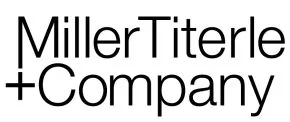Indigenous Partnership Fund
Indigenous organizations still have a last-minute opportunity to fund initiatives that support work toward implementing the United Nations Declaration on the Rights of Indigenous Peoples ("UNDRIP"). Until January 30, 2024, Canada is accepting proposals under the Indigenous Partnership Fund program (the "Fund") for projects that support engagement with Canadian initiatives aimed at implementing UNDRIP or the federal United Nations Declaration on the Rights of Indigenous Peoples Act and its related Action Plan ("UNDA Action Plan").
Under the Fund, Canada will provide funding to Indigenous-led organizations for three categories of activities:
- processes, such as workshops, conferences, roundtables, discussions, and meetings;
- studies and research relating to UNDRIP implementation; and
- policy development on specific topics or subject matters set out in the UNDRIP.
The Fund covers eligible costs incurred between April 1, 2024, and March 31, 2025, including staff salaries, travel and accommodation, conference facility rentals, the publication of reports, and consultants (including legal counsel). Canada has stated that the available funding is limited and that it intends to distribute funds on a regional- and distinctions-basis.
Examples of Projects
The UNDA Action Plan identifies several key priorities that can form the basis for a broad scope of activities and projects that could be supported under the Fund. However, beyond activities directly targeting the priorities set out in the UNDA Action Plan, Indigenous organizations may have considerable latitude in developing new projects that could be supported through the Fund.
Highlighted below are three examples of potential projects that may overlap with priorities set out in the UNDA Action Plan, but many other possible initiatives could be supported under the Fund.
1. Re-articulation and Revitalization of Indigenous Laws and Governance
Article 5 of UNDRIP recognizes that "Indigenous peoples have the right to maintain and strengthen their distinct political, legal, economic, social and cultural institutions...", and Article 34 states "Indigenous peoples have the right to promote, develop and maintain their institutional structures and their distinctive customs, spirituality, traditions, procedures, practices and, in the cases where they exist, juridical systems or customs, in accordance with international human rights standards". Many Indigenous peoples and nations across Canada are engaging in the re-articulation and revitalization of their laws and governance structures.
Legal order revitalization may engage subject areas as diverse as: governance structures; citizenship/membership laws; land, water, and natural resources use; emergency response; language revitalization; children and families jurisdiction; education; internal human rights laws; gender equity; Indigenous justice systems; Indigenous health and safety; housing and land entitlement; trade and Indigenous economies; relationships between Indigenous nations; tangible and intangible cultural heritage; and Indigenous intellectual property.
Legal order revitalization work could involve activities such as:
- conducting research into sources of Indigenous law;
- engaging community members/citizens on their legal tradition(s);
- preparing reports and presentations;
- drafting laws and policies that reflect Indigenous legal orders;
- designing new institutions, structures, or procedures; and
- implementing newly articulated laws or structures.
2. Revitalization of Indigenous Intellectual Property
Article 31 of UNDRIP states that Indigenous peoples have a right to maintain, control, protect, and develop their intellectual property ("IP") connected to their cultural heritage, traditional knowledge, and traditional cultural expressions. It also provides that Canada must work alongside Indigenous peoples to take measure to recognize and protect their exercise of these rights. The current Canadian IP framework does not provide adequate tools to address the collective and generational knowledge of Indigenous communities, which can often include substantive understandings and observations of the natural world; cultural heritage; traditional expressions and systems; ways of life; and many other bodies of Indigenous knowledge and expression, each of which may not have been recorded in physical media.
There is a need for Indigenous-led projects aimed at revitalizing and developing an understanding of Indigenous IP and Indigenous knowledge. IP-related projects that could be supported through the Fund include: education regarding Indigenous IP, capacity building and awareness-raising activities; research on, and the registration of Indigenous IP; the development of new IP-related tools or resources; and participation in workshops, conferences, seminars, meetings, or other events with a focus on IP and the protection of Indigenous knowledge and Indigenous cultural expressions.
3. Community Engagement on UNDRIP-Related Initiatives
Finally, it's important to note that Indigenous communities may each be at different starting places in considering how to implement UNDRIP-related programs, including those related to the examples described above. Understanding where your community is at, what its priorities are, and how to best strategize future engagements with the Crown around implementing Indigenous rights is a critical first step.
Support from the Fund could potentially be used to develop a comprehensive community engagement process aimed at understanding these considerations and help identify what targeted programs can support UNDRIP implementation for the benefit of an Indigenous nation.
Some potential uses of the Fund for this purpose could include:
- preparing materials regarding Canadian and international law as they relate to Indigenous legal orders;
- creating an internal engagement coordinator position or a community engagement team; and
- hiring an engagement consultant to facilitate community engagement.
How to Apply for Funding
To apply under the Fund, the applicant must be an Indigenous-led organization located in Canada. This includes bands under the Indian Act, tribal councils, Indigenous self-governments, Indigenous governing bodies, incorporated not-for-profit Indigenous-controlled organizations, and local, regional, and national representative organizations.
Depending on the size of Indigenous organization and the nature, scope, and length of the proposed project, the applicant could receive funding between $30,000 and $150,000. For example, activities proposed at the community level may receive funding between $30,000 – $50,000; at the regional level, between $75,000 – $100,000; and at the provincial/national level, between $75,000 to $150,000. More information can be found on the Indigenous Partnership Fund website.
The proposal deadline is closing quickly! Applicants must complete the funding application form and provide supporting documentation by 11:59 pm (PST) on January 30, 2024.
The content of this article is intended to provide a general guide to the subject matter. Specialist advice should be sought about your specific circumstances.



